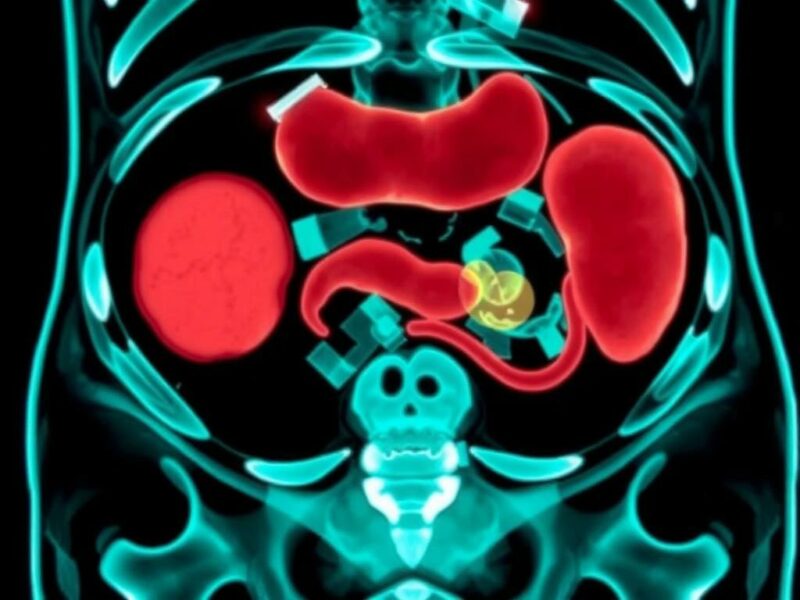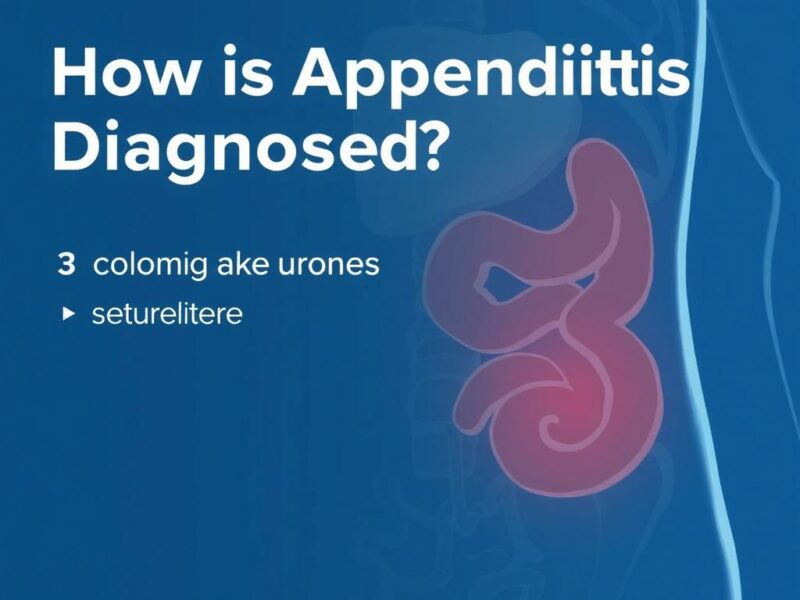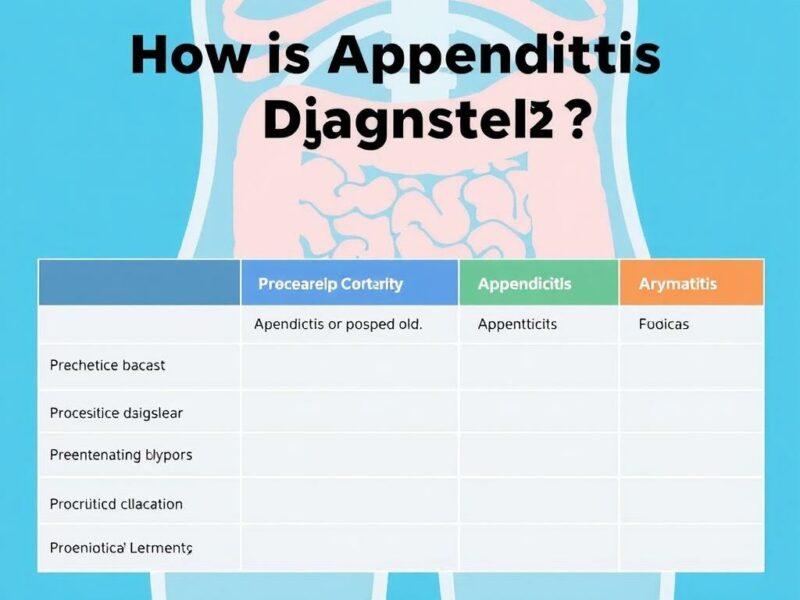Appendicitis is a common condition that can happen to anyone, often catching people off guard with sudden abdominal pain. If you’ve ever wondered how doctors figure out whether someone has appendicitis, you’re in the right place. Diagnosing appendicitis isn’t as straightforward as just pointing to the pain and making a conclusion. It involves careful evaluation, a series of tests, and sometimes imaging to confirm what’s going on inside the belly. In this article, we’ll walk you through how appendicitis is diagnosed, the signs doctors look for, the tests they use, and why quick diagnosis is so important. By the end, you’ll have a clearer understanding of the entire process.
What Is Appendicitis and Why Does It Need Timely Diagnosis?
Before diving into how appendicitis is diagnosed, it helps to understand what it actually is. Appendicitis occurs when the appendix, a small tube attached to the large intestine, becomes inflamed. This inflammation is usually caused by a blockage, which leads to infection. The problem is that if appendicitis goes untreated, the appendix can burst, causing serious complications like peritonitis (infection of the abdominal lining). This can become life-threatening quickly.
Doctors stress the importance of timely diagnosis because the longer appendicitis remains untreated, the higher the risk of rupture and complications. Knowing the signs and how diagnosis works can save lives. Now, let’s explore the steps healthcare providers take to diagnose this condition.
Understanding the Initial Signs and Symptoms of Appendicitis
One of the first clues that doctors use to suspect appendicitis is the patient’s description of symptoms. Although symptoms can vary, there are very common signs that point toward appendicitis, which medical professionals carefully ask about during their first meeting with a patient.
Typical Symptoms of Appendicitis
- Sharp pain starting around the belly button and moving to the lower right side
- Nausea and vomiting
- Loss of appetite
- Fever
- Swelling or tenderness in the abdomen
- Constipation or diarrhea
- Inability to pass gas
These symptoms don’t always appear all at once, and not everyone experiences them the same way, especially children, pregnant women, or the elderly. This is why doctors don’t rely solely on symptoms.
The Physical Exam: Feeling for Clues in the Abdomen
Once a doctor hears about possible symptoms, they perform a physical examination. This step is crucial in the diagnostic journey.
During the exam, the doctor will:
– Press gently but firmly on various spots in the abdomen to identify areas of tenderness.
– Look for rebound tenderness, where pain increases after quickly releasing pressure.
– Test for specific signs like the Rovsing’s sign (pain in the lower right abdomen when pressing on the left side).
– Evaluate whether the patient shows guarding (tensing abdominal muscles to protect the area from pain).
This hands-on approach provides essential clues to the doctor’s suspicion of appendicitis.
Laboratory Tests Used in Appendicitis Diagnosis
After the physical exam raises suspicion, the doctor often orders lab tests to gather more evidence. These tests are important because they show the body’s response to inflammation or infection.
Common Lab Tests Include:
| Test | What It Shows | Relevance to Appendicitis Diagnosis |
|---|---|---|
| Complete Blood Count (CBC) | Measures white blood cells (WBC) and other blood components | Elevated WBC count suggests infection or inflammation |
| C-Reactive Protein (CRP) | Indicates inflammation in the body | Higher levels may point to appendicitis or other infections |
| Urinalysis | Analyzes urine for infection or kidney stones | Helps rule out other causes like urinary tract infections |
While lab tests support the diagnosis, they aren’t definitive on their own. They add pieces to the puzzle and help rule out other possible causes of abdominal pain.
Imaging Techniques: Seeing Inside the Abdomen

One of the key parts of diagnosing appendicitis involves imaging studies. Unlike some conditions where a physical exam and lab tests suffice, appendicitis often requires imaging to confirm whether the appendix is inflamed or not.
Common Imaging Methods Include:
- Ultrasound: This is often the first choice, especially for children and pregnant women. It uses sound waves to create images of the abdominal organs. An appendix that appears enlarged or shows no movement can indicate appendicitis.
- Computed Tomography (CT) Scan: This imaging technique provides detailed cross-sectional images and is more sensitive and specific than ultrasound. It can reveal an inflamed or swollen appendix, presence of an abscess, or other abnormalities.
- Magnetic Resonance Imaging (MRI): Though less common, MRI is sometimes used when radiation exposure needs to be minimized, like in pregnancy. It can successfully detect appendicitis without the use of X-rays.
Choosing the Right Imaging Technique
Doctors select an imaging method based on several factors, including patient age, pregnancy status, availability of equipment, and urgency. For example, ultrasound is safe and non-invasive but can sometimes miss cases, especially if the appendix is deep in the abdomen. On the other hand, CT scans have excellent accuracy but involve radiation exposure.
Scoring Systems: Helping Doctors Decide

Interestingly, medical professionals use scoring systems to quantify the likelihood of appendicitis based on symptoms, exam findings, and lab results. These scoring tools help reduce unnecessary imaging or surgeries.
Alvarado Score Example
| Criteria | Points |
|---|---|
| Migration of pain to right lower quadrant | 1 |
| Anorexia (loss of appetite) | 1 |
| Nausea or vomiting | 1 |
| Tenderness in right lower quadrant | 2 |
| Rebound pain | 1 |
| Elevated temperature (fever) | 1 |
| Leukocytosis (high WBC count) | 2 |
| Left shift of neutrophils | 1 |
A score of 7 or more generally indicates a high probability of appendicitis. Scores guide decisions about who needs surgery or imaging urgently.
When Diagnosis Is Challenging: Special Considerations
Sometimes, diagnosing appendicitis isn’t clear-cut. Certain groups of people might have unusual presentations:
- Children: They may have difficulty explaining symptoms, making physical exams trickier.
- Pregnant Women: The appendix may shift position because of the growing uterus, so pain may not present in the typical lower right quadrant.
- Older Adults: Symptoms might be less dramatic or confused with other illnesses.
Doctors need to be especially thorough in these cases, sometimes repeating exams, ordering additional tests, or closely monitoring patients before making decisions.
How Is Appendicitis Confirmed? Surgical Decision-Making
Ultimately, the diagnosis of appendicitis is confirmed either by imaging results in combination with clinical findings or during surgery when the appendix is directly examined. In many cases, once appendicitis is strongly suspected, surgery is the recommended treatment to remove the inflamed appendix.
Minimally invasive laparoscopic appendectomy is the most common surgical approach today. Removing the appendix before it ruptures results in better outcomes and shorter hospital stays.
Summary Table: Steps in Diagnosing Appendicitis

| Step | Description | Purpose |
|---|---|---|
| Symptom Review | Discuss pain, nausea, fever, and other symptoms | Initial suspicion of appendicitis |
| Physical Exam | Check abdomen for tenderness, rebound pain, guarding | Assess signs of inflammation |
| Laboratory Tests | Blood and urine tests to detect infection or inflammation | Support or rule out diagnosis |
| Imaging | Ultrasound, CT, or MRI to visualize appendix condition | Confirm diagnosis and severity |
| Scoring Systems | Use of tools like Alvarado score | Help determine risk and treatment plan |
| Surgical Confirmation | Direct inspection/removal of appendix | Definitive diagnosis and treatment |
Common Misconceptions About Diagnosing Appendicitis
Many people believe that appendicitis can be diagnosed solely by the presence of stomach pain, but the truth is far more complex. Pain can mimic many other conditions, such as urinary tract infections, ovarian cysts, gastroenteritis, or kidney stones. This is why doctors take a thorough approach — blending history, exam, labs, imaging, and sometimes observation.
Another misconception is that a normal ultrasound rules out appendicitis. Because of the appendix’s location or patient body type, an ultrasound sometimes misses cases, requiring further tests like a CT scan.
Advancements in Appendicitis Diagnosis
Technology continues to improve the diagnosis of appendicitis. Artificial intelligence (AI) and machine learning are being explored to analyze imaging scans faster and with greater accuracy. Additionally, new blood markers being researched may help distinguish appendicitis from other causes of abdominal pain more reliably.
Telemedicine has also become an important tool, allowing doctors to evaluate symptoms early and recommend emergency care before patients worsen.
Conclusion
Diagnosing appendicitis involves a careful and systematic approach combining patient symptoms, physical examination, laboratory tests, imaging studies, and structured scoring systems. Because appendicitis can quickly escalate from manageable to life-threatening, timely and accurate diagnosis is critical. While some cases are straightforward, others require extra attention and diagnostic tools, especially in children, the elderly, or pregnant women. Advances in technology continue to enhance our ability to confirm appendicitis more efficiently and safely. Understanding how appendicitis is diagnosed not only empowers patients to seek care promptly but highlights the thoughtful process doctors undertake to ensure the best outcomes. If you or someone you know experiences signs suspicious for appendicitis, it’s important to seek medical evaluation immediately — because early diagnosis saves lives.



